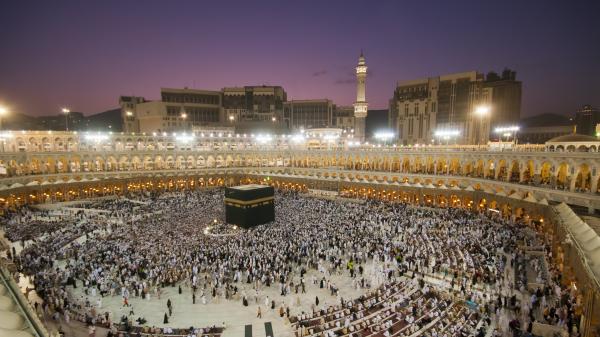The Islamic Leap Year
As an observational lunar calendar, the traditional Islamic Hijri calendar does not have leap years. However, some countries and Muslim communities use a rule-based version with leap years called the Tabular Islamic calendar.

The Muslim pilgrimage to Mecca (Hajj).
©iStockphoto.com/afby71
No Leap Years
Months in the traditional version of the Islamic calendar are directly tied to the timing of the Moon phases. The length of each month is determined by the duration of a Moon cycle or lunation, specifically the time from one Waxing Crescent Moon to the next.
Even though the sum of 12 lunar months consistently falls 11 days short of the length of a solar year, Islamic time reckoning does not employ correction mechanisms, like leap days in the Gregorian calendar.
Read more about the traditional Hijri calendar
Unpredictable Months
As in Jewish time reckoning, a new month in the Islamic calendar traditionally begins after the New Moon, when a thin Crescent Moon becomes visible just after sunset. However, in contrast to the Hebrew system, the Islamic calendar relies on an actual observation of the Crescent Moon. This makes the timing of the months difficult to predict. For example, bad weather conditions may delay the beginning of a new month by one day at short notice.
The Tabular Islamic Calendar
To make Islamic time reckoning more predictable and less dependent on lunar observations, Muslim scholars developed the Tabular Islamic calendar in the 8th century CE. This system uses arithmetical rules to determine the length of each month and inserts leap days on a regular basis.
Like in the traditional version, each year has 12 months. However, their length is predetermined: months with uneven numbers have 30 days, while months with even numbers have 29 days.
In a leap year, a day is added to the 12th and final month, Dhu 'l-Hidjdja, making it 30 days long. Common years in the Tabular Islamic calendar have 354 days, while leap years are 355 days long.
Leap Years Rules
A leap day is added every 2 to 3 years. There are 11 leap years in a 30-year cycle. Their distribution varies slightly from one country or Muslim community to another. However, the most common version defines the 2nd, 5th, 7th, 10th, 13th, 16th, 18th, 21st, 24th, 26th, and 29th year of each 30-year cycle as leap years.
In Step with the Lunar Year
Inserting a leap day on a regular basis keeps the Tabular Islamic calendar in sync with the lunar year, which is a little longer than 354 days.
In contrast to the leap days inserted in solar calendars like the Gregorian calendar and the leap months used in lunisolar systems like the Jewish calendar, the Islamic leap day is not designed to align the calendar with the solar year, which on average lasts just over 365 days.
Pilgrimage Month
Dhu 'l-Hidjdja is one of the four sacred months in the Hijri calendar. It is the month of the Hajj—the Muslim pilgrimage to Makkah. The other sacred months are Rajab, Dhū al-Qa‘dah, and Muḥarram.